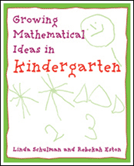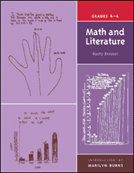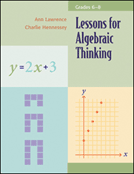 Math Solutions
Math Solutions
Founded by Marilyn Burns
Because my daughter was severely dysgraphic as a young child (she has finger agnosia, a glitch in the transfer of sensation from fingers to brain), we couldn’t use any of the math programs that relied on writing. This was fortunate for us both, because it ended up sending me away from more left-brained oriented programs. What I found was a mix of things, from games to picture books to spatial puzzles. I also found Marilyn Burns.
The offerings have hugely expanded since my daughter was little. But basically, what the various books offer are conceptually-oriented lesson plans — no workbooks or worksheets, no long lists of practice problems. You do that on your own, if you desire. The lessons here are geared toward promoting deep understanding.
Almost all the lessons begin with some kind of hands-on activity, from using manipulatives to making or building to creating patterns to reading picture books, then making your own versions. They then move into discussion of the problem or situation set up by the activity, looking at the problem from a variety of angles. Only towards the end do you move to standard mathematical written form. Often several different ways of solving a problem are introduced so that kids can get used to thinking of math as exploration, not a series of rigid procedures.
Some of the activities my daughter enjoyed best that I remember:
- A fractions activity. We cut circles from patterned paper (wrapping paper, origami paper), and then I cut some in half, some in quarters, and some in eighths. We then made pictures from them; my daughter made a huge imaginary flying animal as I recall. Then we counted up how many whole circles (and any leftover bits) we had in our total picture. My daughter liked this so much we did it multiple times.
- A patterning activity. This was from one of the Algebraic Thinking books. We used small manipulatives and set up “stages” of a particular pattern we had in mind, beginning with easy things like x + 2, where x is the stage, and moving gradually to patterns with x squared, etc. My daughter even tried to figure out how to pattern prime numbers as predictable stages (can’t be done). Then we’d have the other person figure out the equation for the pattern. Again, my daughter loved this so much she would request it for general family game time.
The materials end with 8th grade; my daughter was finished with them a year and a bit earlier than that. I almost wept when we finished the junior high materials!
Marilyn Burns also has a couple of books about understanding math in general for parents and teachers. ~Karen








